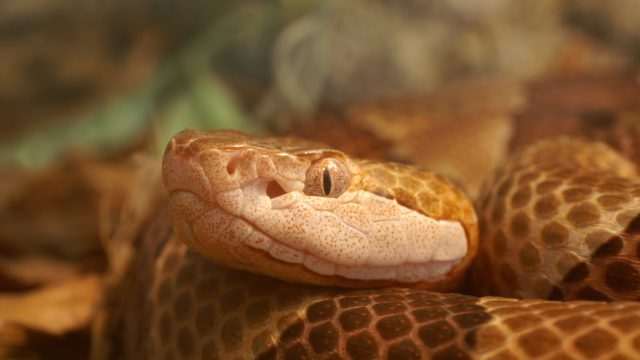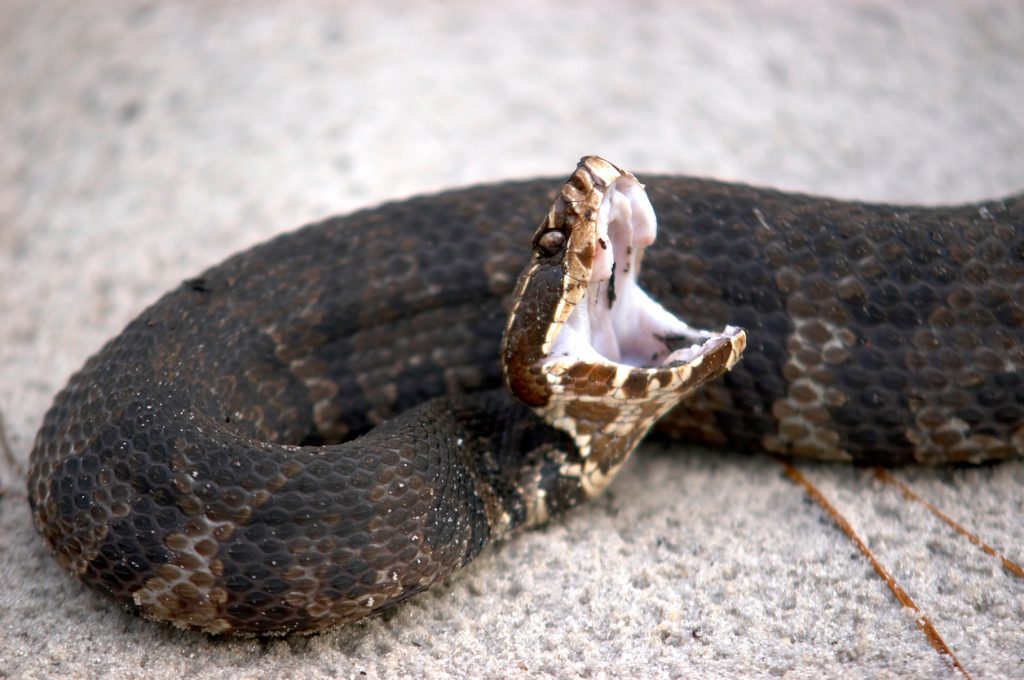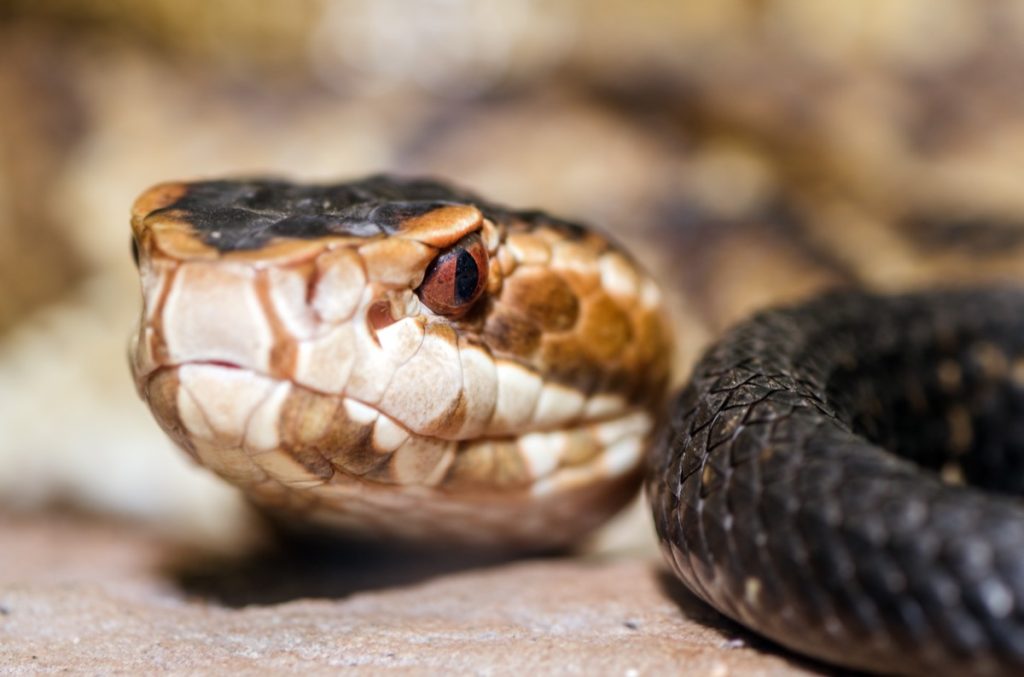Officials Warn Snake Season Is Starting Earlier This Year: “Going to Be a Bad One”

There’s always a bit of excitement when winter begins to give way to warmer spring weather. Many look forward to resuming some of their favorite outdoor activities and starting the early phases of reopening their gardens. But just as temperatures are slowly beginning to rise, experts are warning that snake season is starting even earlier than usual this year. Read on to see why some are concerned and how you can keep yourself safe.
READ THIS NEXT: Keeping This Outside Will Attract Snakes to Your Yard, Experts Say.
Snakes are starting to appear even earlier than their regular spring season.

One of the joys of spring is all of the plant and animal life that return along with it. But this year, officials in some areas are already warning that snakes are getting a head start on their typical season and becoming more active earlier than expected.
According to pest services companies in Central Virginia, they have seen an unprecedented spike in calls to deal with snakes over the winter, local CBS affiliate WTVR reports. Now, some are concerned the trend will continue as the weather warms up well ahead of the usual beginning of snake season in April—including sightings of venomous species such as copperheads and cottonmouths, per Newsweek.
“It does get worse and worse every year,” Richard Perry, owner of Virginia Wildlife Management and Control, told WTVR. “For snakes, we know it’s going to be a bad one.”
Officials with the South Carolina Department of Natural Resources (SCDNR) are also reminding residents that the early return of warm spring weather means that reptiles are beginning to re-emerge. The state counts 38 species of snake overall, including six venomous species such as the copperhead, coral snakes, and various types of rattlesnakes, The State reports.
Warmer than average weather could be playing a part in snakes’ head start.

As cold-blooded animals, snakes in most regions usually turn in for the winter once the weather begins to cool off after late fall. This also coincides with people heading back indoors as well, with the high season for reported human bites running from April through October, according to the U.S. Department of Agriculture (USDA) Forest Service. But while the chill will usually keep them relatively inactive for months on end, unusual spikes in temperature can sometimes cause the reptiles to wake up and resume hunting.
“We saw one in the dead of winter,” Central Virginia resident Monica Kincaid told WTVR. “It was freezing outside. We are very careful when we go and get our firewood because we do keep that in the tree line. We just make sure that we go we have flashlights, or we bring them over in the daylight first, or I make my husband go get it.”
This isn’t the first time an area has noticed a shift in the season. Last year, residents in Northern California noted rattlesnakes appearing in early March as abnormally warm weather hit the region.
“Historically, for our area, it is generally closer to the last half of April and into May before they become more active, but in our evolving climate here they can, and do, become active during warmer cycles of weather, like what we have been experiencing this week,” Peter J. Flowers, wildlife hospital and rehabilitation manager at Lindsay Wildlife Experience, told SFGate last March. “This is generally true of all of the species of snake that inhabit our region.”
RELATED: For more up-to-date information, sign up for our daily newsletter.
Officials say there are a few ways to tell if some species are venomous.

Whether you’re doing yard work or taking a walk along a nature trail, spending any amount of time outdoors means you’re bound to come across a snake at some point. Fortunately, most species are non-venomous and completely harmless to humans and pets. But if you’re concerned about a snake you’ve discovered on your property or in your home, officials say there are a few ways to identify if it has a harmful bite.
According to SCDNR, some venomous snakes in the U.S. fall under the pit viper category, including rattlesnakes, cottonmouths, and copperheads. The agency says the species found in South Carolina and elsewhere “will have large triangular or arrow-shaped heads” and tend to be “relatively heavy-bodied or stout.” They also have a heat-sensing pit between their nostril and eye—giving the category its name—and an elliptical pupil similar to a cat.
Here’s how you can avoid a run-in with a snake as they begin to reappear.

Just because snakes are making an earlier appearance doesn’t mean you can’t go outdoors and enjoy the changing seasons. Experts say there are a few ways you can keep yourself safe and avoid any dangerous encounters with the reptiles by staying aware of your surroundings—especially in places they tend to inhabit.
“They love piles of leaves, they love brush piles, they love log piles, they love brickwork, stonework, any of that kind of stuff,” Perry told WTVR. “They just love to gravitate towards those areas. What happens now in the springtime, a lot of people are doing their spring cleanup. They’re cutting their hedges, trimming bushes and trees and whatnot, and they have a tendency to leave those brush piles there because they will get to them a little bit later on. The longer you leave them there, it is literally a welcome mat to snakes.”